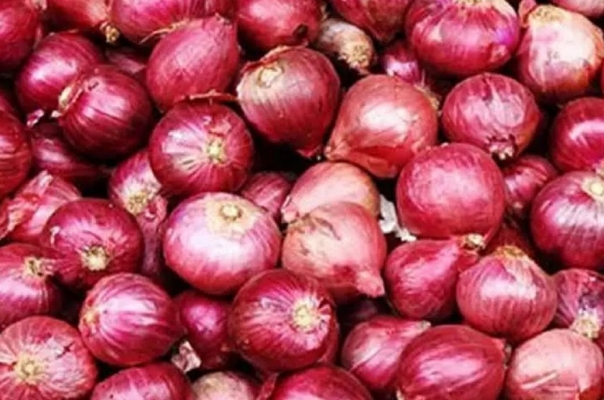Bhima Kiran: Suitable for Rabi cultivation. Ready to harvest in 125-135days. Gives average yield of 11-13qtl/acre.
Bhima light Red: Ready to harvest in 110-120days. Gives average yield of 14-16qtl/acre.
N 241: Brick red and globular shape bulbs. Bulbs are medium size with good keeping quality. Gives average yield of 100-120qtl/acre.
Bhima Red: Suitable for Late kharif also. Bulbs are attractive red color. Ready to harvest in 115-120days. Gives average yield of 190-210qtl/acre.
Bhima Raj: Dark red, oval shape bulbs. Ready to harvest in 120-125days. Gives average yield of 100-120qtl/acre.
Bhima Shakti: Suitable for growing in Kharif and Rabi season. Ready to harvest in 130days after transplanting, gives average yield of 170qtl/acre.
Bhima Shweta: Variety with white colors bulbs. Ready to harvest in 110-120days. Gives average yield of 10-12qtl/acre.
Punjab red round: Shinning red with globular shape variety. Early maturing, high yielding variety. Gives average yield of 100qtl/acre.
Pusa Ratnar: Bulbs are flat globular shape with deep bronze red color variety. Gives average yield of 125-140qtl/acre.
Pusa Red: Medium size bulb with bronze color. It has good keeping quality. Gives average yield of 125-140days after transplantation. It gives average yield of 100-120qtl/acre.
Pusa White Round: White, round, flat bulbs. Gives average yield of 120qtl/acre.
Other states variety
NHRDF-Red: High yielding variety with attractive dark red color bulbs. Ready to harvest in 110-120days. Gives average yield of 100-120qtl/acre.
Agrifound light red: Bulbs are globular shape with light red color with 4-6cm in diameter. Gives average yield of 120-130qtl/acre.
Pusa white flat: White, flat, medium to large size bulb. Suitable for dehydration.
Pusa Madhavi: Medium to large size bulb with light red color. Ready to harvest in 130-135days after transplanting. Gives average yield of 120qtl/acre.
Pusa Ridhi: Suitable for kharif as well rabi season. Bulbs are compact, flat globular with dark red color. Gives average yield of 120qtl/acre.
Arka Bindu: Small size bulb with deep pink color. Early maturing variety suitable for export. Gives average yield of 100qtl/acre.
Banglore Rose: Small size bulb with uniform size. Gives average yield of 60qtl/acre.
Early Grano: Developed by IARI, New Delhi. Bulbs are of yellow color. Suitable for cultivation in Kharif as well as Rabi season. Gives average yield of 200qtl/acre.
Brown spanish: Yellow color variety with excellent storage capacity. Gives average yield of 100-120qtl/acre.
Arka Pitamber: Uniform, globular bulbs with good storage capacity.
Phule swarna: Suitable for export. Gives average yield of 96qtl/acre.
Kalyanpur Red Round: Popular variety of Uttar Pradesh. Bulbs are brown color with globular shape. Plants are ready to harvest in 150-160days. Gives average yield of 8-10ton/acre.










